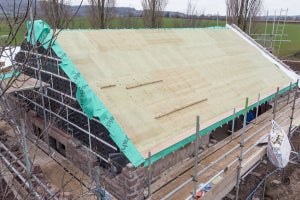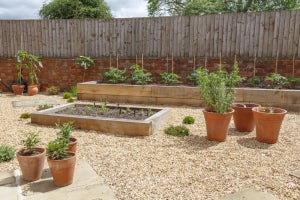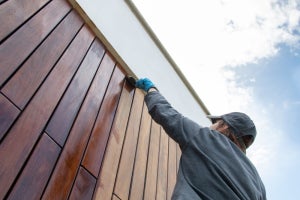How to Maintain Timber Cladding

Timber cladding brings warmth, character, and a timeless finish to our homes. It's a natural choice for those of us who value aesthetics as much as function. However, like all things natural, timber needs care to stay in top condition. In this guide, we'll share our best advice for timber cladding maintenance, with hands-on tips you can use yourself, even if you're new to home improvements.
Why Timber Cladding Needs a Little TLC
Wood is a living, breathing material. That's part of its appeal, but it also means it's vulnerable to the elements. Sun, rain, frost and even air pollution can all take their toll. Without regular upkeep, cladding can fade, warp, crack or suffer from mould and rot. That's why it's important to stay on top of maintenance. It helps protect the timber, extend its life, and keep our homes looking great.
Step 1: Inspect Regularly
We recommend giving your timber cladding a once-over at least twice a year, ideally in spring and autumn. This way, you can spot any loose boards, cracks, signs of damp, or areas where mould or algae might be taking hold. Catching problems early saves time, money, and effort in the long run.
Step 2: Give It a Gentle Clean
Cleaning timber cladding doesn't have to be complicated. First, use a soft broom or brush to sweep away dust and debris. For a more thorough clean, a bucket of warm water and mild detergent, applied with a soft-bristled brush, usually does the job.
If there are stubborn patches of algae or mildew, you can use a wood-safe cleaner or timber treatment designed for exterior use. After cleaning, it's essential to rinse thoroughly with clean water and let everything dry out properly. Always avoid pressure washers, they can damage the surface fibres and drive moisture into places it shouldn't go.
Step 3: Reapply Your Chosen Finish
If your cladding is coated with oil, stain, or paint, it's going to need refreshing every few years. South-facing or more exposed walls might need more frequent treatment due to harsher weather exposure.
Before reapplying, lightly sand any rough or flaking areas to prepare the surface. Then, follow the product guidelines closely for application and drying times. Oil-based finishes help nourish the wood and enhance its natural grain, while stains and paints offer extra UV protection and colour choices.
Step 4: Manage Weathering and Greying
One of the natural effects of UV exposure is the greying of timber. Some of us love that soft, silvery finish, which can give any home a rustic charm. But if you prefer to retain the original colour, regular timber cladding maintenance is key.
To slow greying, use UV-resistant oils or stains and reapply them as part of your yearly upkeep. If your timber has already turned grey, it's possible to revive the colour with a wood brightener or a gentle sanding before refinishing.
Step 5: Repair Minor Damage
Timber cladding is tough, but knocks and splits can happen, especially around doorways or busy garden areas. For small cracks or holes, use exterior wood filler that can be sanded and stained to match the surrounding timber. If a board is badly damaged or has started rotting, it's best to replace it completely to maintain the integrity of the structure.
Step 6: Make Sure the Timber Can Breathe
Proper airflow is vital. You should always make sure the space behind your cladding is clear, with no blockages in vents or gaps. If vegetation or dirt is building up around the base of the cladding, clear it out. Good ventilation helps prevent moisture build-up, which is one of the biggest threats to timber.
Our DIY Maintenance Checklist
- Choose quality materials: Timber that's treated and graded for outdoor use will last longer with less fuss.
- Keep plants at bay: Trim back any greenery growing too close. Plants can trap moisture against the wood.
- Use the right products: Not all finishes are equal. Make sure yours is designed for external timber.
- Stick to a schedule: A regular spring and autumn routine helps prevent big jobs later on.
Timber cladding is one of our favourite ways to bring natural style to a home. It's warm, attractive, and if you look after it properly, it's also long-lasting. With just a few tools and a bit of time, you can take pride in maintaining cladding yourself, keeping your home protected and looking fantastic, season after season.







